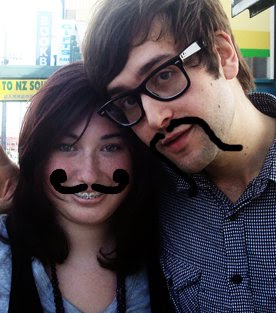Graphic Design has changed so much over the last decade as pen and paper have developed into pixels and software. The graphic designers of the 21st century are having to be more in touch with the people they are designing for these days for something to attract any attention from anyone it has to be provoking or amazing. Today more and ever, the pressure to produce something so amazing and attract a certain target audience and conveys a message at the same time is extreme. Though, a lot of designers have proven that typography is the new way on presenting and advertising.
Dynamic Typography is a type that is produced digitally via computer, television, PDA or cell phone usually, and has seemed to have taken over he usual type of posters and paper. This is because over the last new decades we have transferred ourselves from reading the paper to watching the news and our everyday lives have become surrounded by digital media.
The dynamic typography started back with the fast motion flip books, then emerged into television, film then computer screens. With animated typography, it is useful to look at static typography for placement or design and style of the text to give it added meaning to the word. For example, in 1910's the Dada and Futurist movements looked on how to position the typeface to give there work more meaning, whilst poets around the 1950's and 1960's concentrated on the illustration side of it and developed visual poems which were to be viewed as paintings.
Moving typography started out in the 1950's with film title sequences and becoming an art form, such as Saul Bass' elegant film-within-films, and the design resurfaced in the 1990's with the work of Kyle Cooper. The difference with these two typographers work is one didn't have the software and technology of today, such as After Effects and Flash, which has made creating text animations a lot easier.
In this day in age, we are more commonly seeing text in advertisements rather than imagery as it seems to grab attention better than some expensive filmed advertisement. A lot of broadcasting television shows such as the news and music channels use the bottom of the screen to typographically visually show what the news story is about (usually briefly) or the name of the song and artist using a term called a news crawl (which means slowly moving across the screen) which seems to capture our eyes and attention more than someone just talking.
Throughout these changes, it shows our attention span has shortened through the years due to the dynamic typography, computation and digital technology. Though, throughout the experiences, all of these new age media's can also be combined with the basic knowledge of typography to produce , explore and express something innovated and impacting.
Anexample of dynamic typography used via video. Original video from http://www.jarrattmoody.com/
Reference
Fiell, P. & Fiell, C. (2005). Graphic Design for the 21st Century. In Introduction (page 6-10). Cologne, Germany.
Maeda, J. (2004). Creative Code. In Cho, P. (Eds.), Dynamic Typography (pge 81-108). London, England.
Dynamic Typography is a type that is produced digitally via computer, television, PDA or cell phone usually, and has seemed to have taken over he usual type of posters and paper. This is because over the last new decades we have transferred ourselves from reading the paper to watching the news and our everyday lives have become surrounded by digital media.
The dynamic typography started back with the fast motion flip books, then emerged into television, film then computer screens. With animated typography, it is useful to look at static typography for placement or design and style of the text to give it added meaning to the word. For example, in 1910's the Dada and Futurist movements looked on how to position the typeface to give there work more meaning, whilst poets around the 1950's and 1960's concentrated on the illustration side of it and developed visual poems which were to be viewed as paintings.
Moving typography started out in the 1950's with film title sequences and becoming an art form, such as Saul Bass' elegant film-within-films, and the design resurfaced in the 1990's with the work of Kyle Cooper. The difference with these two typographers work is one didn't have the software and technology of today, such as After Effects and Flash, which has made creating text animations a lot easier.
In this day in age, we are more commonly seeing text in advertisements rather than imagery as it seems to grab attention better than some expensive filmed advertisement. A lot of broadcasting television shows such as the news and music channels use the bottom of the screen to typographically visually show what the news story is about (usually briefly) or the name of the song and artist using a term called a news crawl (which means slowly moving across the screen) which seems to capture our eyes and attention more than someone just talking.
Throughout these changes, it shows our attention span has shortened through the years due to the dynamic typography, computation and digital technology. Though, throughout the experiences, all of these new age media's can also be combined with the basic knowledge of typography to produce , explore and express something innovated and impacting.
Anexample of dynamic typography used via video. Original video from http://www.jarrattmoody.com/
Reference
Fiell, P. & Fiell, C. (2005). Graphic Design for the 21st Century. In Introduction (page 6-10). Cologne, Germany.
Maeda, J. (2004). Creative Code. In Cho, P. (Eds.), Dynamic Typography (pge 81-108). London, England.


a really interesting article about how type has drastically changed over the past few years as we have gained new technology.
ReplyDeletenow i'm noticing this more often when i watch the ol' television!